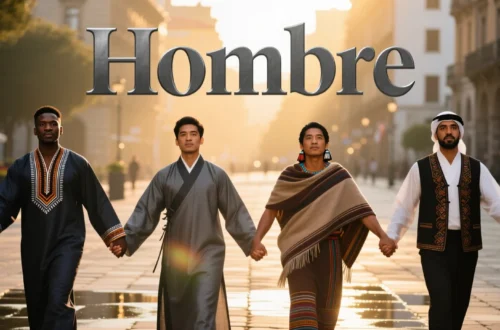As a child, I remember my grandmother showing me her sapphire ring, its deep blue glinting like a piece of the night sky. She called it “nilam” in Hindi, a word that carried stories of love and legacy.
Across the world, the term for “sapphire” evokes the same awe, yet each language shapes it with unique cultural hues. Whether whispered in a Parisian jewelry shop or celebrated in a Sri Lankan market, “sapphire” reflects humanity’s fascination with beauty and eternity.
Let’s embark on a global journey to explore how people name this gem and what it reveals about their cultures.
Reference Table: “Sapphire” in Different Languages
| Language | Word/Phrase | Cultural/Linguistic Insight |
|---|---|---|
| French | Saphir | Evokes elegance, linked to luxury in French jewelry culture. |
| Spanish | Zafiro | Derived from Latin, symbolizing wisdom in Spanish-speaking regions. |
| Italian | Zaffiro | Associated with divine favor, often used in religious art. |
| German | Saphir | Reflects precision, popular in Germany’s gem trade. |
| Mandarin | Lán bǎoshí (蓝宝石) | Means “blue gem,” emphasizing color in Chinese culture. |
| Hindi | Nilam | From “nila” (blue), tied to spiritual symbolism in India. |
| Japanese | Safaia (サファイア) | Borrowed from English, linked to modern luxury in Japan. |
| Korean | Sapai-eo (사파이어) | Adopted from English, associated with elegance in South Korea. |
| Arabic | Yāqūt (ياقوت) | Refers to sapphires and rubies, symbolizing nobility across 20+ countries. |
| Swahili | Yakuti | Borrowed from Arabic, used in East Africa’s gem trade. |
| Zulu | Isafire | Adapted from English, linked to beauty in South Africa. |
| Yoruba | Safaia | Borrowed term, tied to wealth and status in Nigeria. |
| Maori | Hapaira | Reflects the gem’s rarity, valued in New Zealand’s culture. |
| Hawaiian | Kapika | Evokes the ocean’s blue, tied to island heritage. |
| Cherokee | Galvquodi | Means “precious blue,” symbolizing rarity in Native American communities. |
European Languages: Elegance in Every Word
European languages name “sapphire” with terms that reflect sophistication and history. For instance, in French, “saphir” is synonymous with luxury, often featured in Parisian jewelry designs. Meanwhile, Spanish uses “zafiro,” derived from Latin, symbolizing wisdom in countries like Spain and Mexico. Additionally, Italian’s “zaffiro” carries a spiritual weight, historically linked to divine favor in Renaissance art. In German, “Saphir” reflects the culture’s precision, commonly used in Germany’s thriving gem trade. Thus, these terms blend elegance with cultural values, from France’s romantic allure to Italy’s spiritual heritage, making “sapphire” a symbol of timeless beauty.
Asian Languages: A Spectrum of Symbolism
Asia’s linguistic diversity shapes unique terms for “sapphire,” often tied to color and status. For example, in Mandarin, “lán bǎoshí” (blue gem) emphasizes the stone’s vibrant hue, reflecting China’s love for colorful symbolism. In Hindi, “nilam” derives from “nila” (blue), tied to spiritual wisdom in India’s jewelry traditions. Similarly, Japanese uses “safaia,” a borrowed term, associated with modern luxury in Tokyo’s fashion scene. In Korean, “sapai-eo” reflects elegance, popular in South Korea’s growing gem market. Finally, Arabic’s “yāqūt,” used across over 20 countries like Saudi Arabia and Egypt, refers to both sapphires and rubies, symbolizing nobility and wealth. These terms highlight Asia’s range, from spiritual depth to contemporary glamour.
African Languages: Gems of Community and Trade
In African languages, “sapphire” often connects to trade and beauty. For instance, Swahili, spoken in over 20 countries like Kenya and Tanzania, uses “yakuti,” borrowed from Arabic, reflecting East Africa’s historic gem trade. In Zulu, “isafire,” adapted from English, symbolizes beauty in South Africa, often celebrated in cultural ceremonies. Similarly, Yoruba’s “safaia” in Nigeria, a borrowed term, is tied to wealth and status, used in vibrant markets. These words, shared across diverse African settings, emphasize the gem’s role in community pride and economic heritage.
Indigenous & Island Languages: Nature’s Precious Gift
Indigenous and island languages name “sapphire” with reverence for nature. For example, Maori in New Zealand uses “hapaira,” reflecting the gem’s rarity and cultural value in storytelling. In Hawaiian, “kapika” evokes the ocean’s deep blue, tying the gem to island heritage. Similarly, Cherokee’s “galvquodi” (precious blue) signifies rarity, used in Native American communities to honor beauty. In Samoan, terms like “kenika” (gem) reflect the Pacific’s communal appreciation of natural treasures. Across these cultures, from New Zealand to the Cherokee Nation, “sapphire” symbolizes nature’s enduring gifts, often celebrated in rituals.
Cultural Insights: The Evolution of a Gem’s Name
The word for “sapphire” has evolved with cultural and historical shifts. Derived from the Latin “sapphirus” (blue stone), it traces back to ancient Greek and Sanskrit roots. In medieval Europe, “zaffiro” was linked to divine protection, adorning religious relics. In Arabic, “yāqūt” symbolized nobility in ancient texts, influencing African terms like “yakuti.” Moreover, in Asia, “nilam” reflects India’s spiritual traditions, while “lán bǎoshí” aligns with China’s focus on color symbolism. These names carry histories of trade, spirituality, and artistry, uniting cultures through a shared love for the gem’s beauty.
Proverbs and Sayings: Wisdom of the Sapphire
- French: “Un saphir brille comme un cœur fidèle.” (A sapphire shines like a loyal heart.) – Ties the gem to loyalty.
- Hindi: “Nilam jaisa dil, sada chamakta hai.” (A heart like a sapphire always shines.) – Links the gem to enduring love.
- Swahili: “Yakuti ni nuru ya maisha.” (A sapphire is the light of life.) – Reflects its value in community.
- Japanese: “Safaia wa shizuka na chikara.” (A sapphire is quiet strength.) – Emphasizes subtle power.
- Yoruba: “Safaia mu ayọ wa.” (A sapphire brings joy.) – Connects the gem to happiness.
FAQs
Why do some words for “sapphire” sound similar?
Shared linguistic roots (e.g., Latin “sapphirus” in Spanish and Italian) and trade influences (e.g., Arabic “yāqūt” in Swahili) create similarities.
What’s the oldest term for “sapphire”?
The Latin “sapphirus” (circa 1st century BCE), from Greek and Sanskrit, is among the earliest recorded terms.
How do cultures shape the term’s use?
Spiritual cultures (e.g., Indian, Arabic) tie “sapphire” to wisdom and nobility, while practical cultures (e.g., German) focus on its trade value.
Conclusion
From “zafiro” in Spain to “yakuti” in Tanzania, the word for “sapphire” weaves a global thread of beauty and meaning. Each term, whether the spiritual “nilam” in Hindi or the nature-inspired “kapika” in Hawaiian, reflects cultural values while celebrating the gem’s universal allure. Consequently, these words remind us that sapphires, like human stories, shine across borders, uniting all people in admiration. How do you say “sapphire” in your language, and what does it mean to you? Share your thoughts below—we’d love to hear your story!






